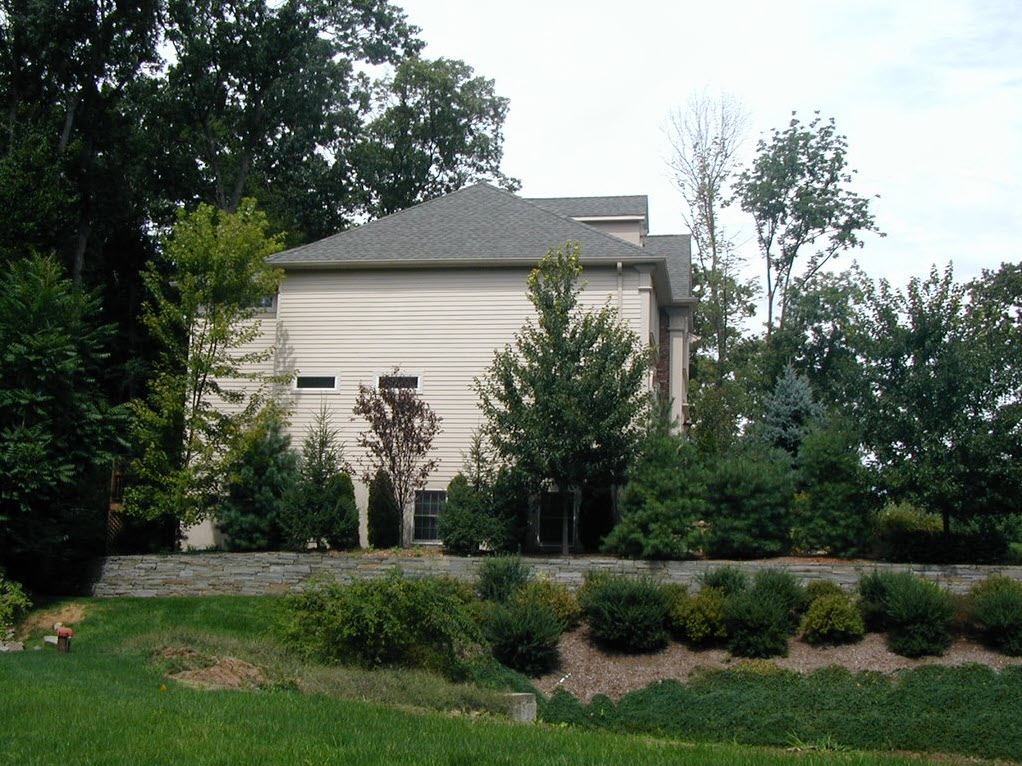Planting Design With A Purpose
Planting design should always have a purpose. It’s just that the degree of purpose can vary.
For example, one role (or purpose) may be purely enjoyment – a garden designed to entertain.
Then, on the other hand, a planting design can be created to serve a functional role (e.g. screening, erosion control, etc.).
Well, it’s quite obvious what the homeowner wanted to do in the picture above – soften the view of the side of the house.
And it appears as though the landscape company that did this job fulfilled the customer’s request. Well, in a way they did. I do see less of the house now than before the plants were installed.
Should the customer be pleased with the job? Possibly, but only if:
- The customer is not very particular from a design sense.
- The cost was very low.
- The customer does not plan on staying in this house very long.
A Lack of Planting Design
If there’s one common denominator in good design it’s unity. That is, some relationship between the elements that brings them together in composition.
Unfortunately, this planting design looks more like a collection of plants at a garden center’s clearance sale.
And lets not forget that: A) plants grow, and B) each plant type has its own size potential.
If you consider the growth of most of the plants chosen and their spacing from the house…well, it won’t be long before these plants are growing right into the building.
You can’t possibly do planting design well without a reasonable amount of plant knowledge and the willingness to “look up” information you don’t know.
There are two injustices with this planting pictured above:
- The homeowner has entrusted this job to someone they thought (or was led to believe) was a professional.
- In a relatively short time the plants will begin growing into one another and overpowering the building. Ultimately this planting will need to be renovated, which can only be postponed by regimented (and costly) pruning.
For the homeowner: As with any other home improvement project, know who you’re dealing with.
Referrals are always a good place to start. Look at other jobs the company has done, especially older ones so you can see how the plantings are developing.
Speak to the homeowners and find out what was their experience with the company. A little investigating and research can mean the difference between a good design and investment — and a costly mistake.
For the landscape contractor: Planting design is what separates the professional companies from “the others”.
This is the knowledge and skill that takes time to acquire. In fact, it’s an area that you should never stop learning in because it is vast and always expanding.
This is the expertise that sets your projects apart – not only when they are first installed, but most importantly, many years later.

